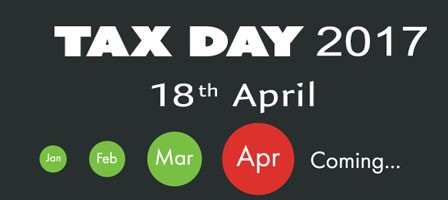Calculating Corporate Estimated Tax: What You Need to Know
- Learn about the current year method and avoid penalties related to corporate estimated tax.
- Discover the preceding year’s method for corporate estimated tax.
- Find information about the annualized income method.
- Learn about the mathematical test used to determine eligibility for the seasonal income method.
The next quarterly estimated tax payment deadline is September 15th for individuals and calendar year businesses. So, it’s a good time to review the rules for computing corporate federal estimated payments. You want your business to pay the minimum amount of estimated taxes. You also don’t want to trigger the penalty for underpayment of corporate estimated tax.

Four methods for calculation of corporate estimated tax
So, what is the required installment of corporate estimated tax that a corporation must pay to avoid a penalty? It is the lowest amount determined under each of the following four methods:
Current Year Method
Under the current year method, a corporation can avoid the corporate estimated tax underpayment penalty by paying 25% of the tax shown on the current tax year’s return. If they do not file a return, they must pay 25% of the tax for the current year. Corporations must make these payments by each of four installment due dates. The due dates for the calendar year are generally April 15, June 15, September 15, and January 15 of the following year.
Preceding Year Method
How can a corporation avoid the corporate estimated tax underpayment penalty under the preceding year method? A corporation must pay 25% of the tax shown on the return for the preceding tax year by each of four installment due dates. (Note, however, that for 2022, certain corporations can only use the preceding year method to determine their first required installment payment. A corporation with taxable income of $1 million or more in any of the last three tax years will have this restriction.) In addition, this method isn’t available to corporations with a tax return that was for less than 12 months. There is also no availability for a corporation that didn’t file a preceding tax year return that showed some tax liability.
Annualized Income Method
Under the annualized income method, a corporation can avoid the corporate estimated tax underpayment penalty if it pays its “annualized tax” in quarterly installments. We compute the annualized tax on the basis of the corporation’s taxable income for the months in the tax year ending before the due date of the installment. This, of course, assumes the corporation will receive income at the same rate over the full year.
Seasonal Income Method
Corporations with recurring seasonal patterns of taxable income can annualize income by assuming income earned in the current year is earned in the same pattern as in preceding years. We call this the seasonal income method. There’s a somewhat complicated mathematical test that corporations must pass in order to establish that they earn their income seasonally. This test qualifies them to use this method. Think your corporation might qualify for this method? Don’t hesitate to ask your Fiducial representative to help determine if it does.
Also, note that a corporation can switch among the four methods during a given tax year.
Want to reduce your corporation’s estimated tax bill? Fiducial can examine your corporation’s estimated tax for available reductions. Call Fiducial at 1-866-FIDUCIAL or make an appointment at one of our office locations to discuss your situation.
Ready to book an appointment now? Click here. Know someone who might need our services? We love referrals!
For more small business COVID-19 resources, visit Fiducial’s Coronavirus Update Center to find information on SBA loans, tax updates, the Paycheck Protection Program, and paid sick and family leave.









